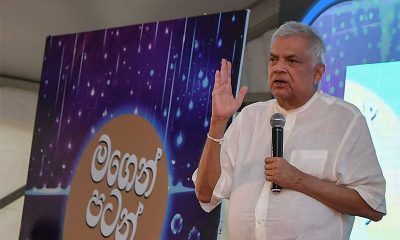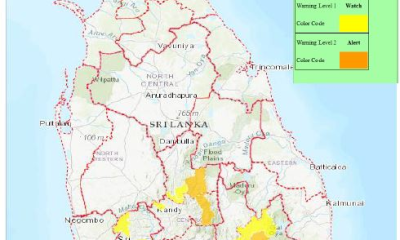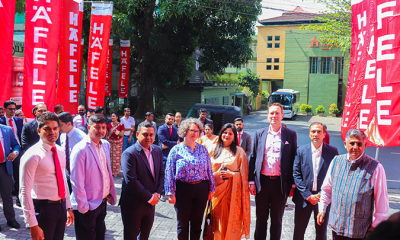Opinion
Tribute To My Alma Mater- Kingswood College, Kandy
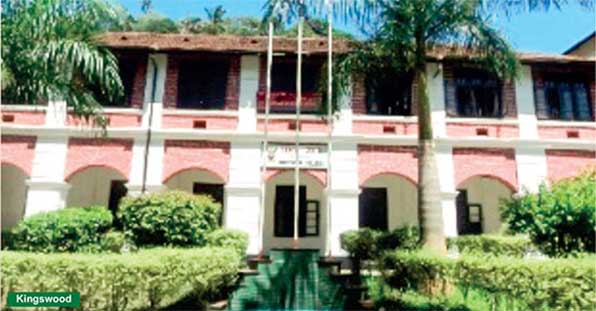
The 132nd Anniversary of the founding of the famous boys’ school in the hill capital, Kingswood College, Kandy by Mr. Louis Edmund Blaze’ fell on 04th May 2023. At the time the school was established, it was known as the Boys’ High School. All past and present students should be proud of the vast strides made by Kingswood during this period of over one and a quarter century from its very modest beginnings in Pavillion Street.
Mr. Blaze’, after obtaining his matriculation was recruited as a teacher in Trinity College, Kandy, his alma mater. However, after teaching for some time he left for Calcutta to read for his degree. After obtaining his degree he secured teaching appointments in Calcutta and Lahore, where he saw a great difference in the normal teacher-student relationship, which was much more friendly than what he was used to in Ceylon. On his return to Ceylon in January 1881, after his teaching stint in Calcutta and Lahore, Mr. Blaze’ dreamed of establishing a school of his own, a school to be different from what he had been used to as a student and a teacher, and to run it his own way.
Five months after his return to Ceylon, his desire to start his own school was fulfilled when the Boys’ High School was established in a small building in Pavilion Street, Kandy with 11 pupils on the roll. Mr. Blaze’ wanted his school to be one in which the friendliest relations would prevail between teachers and pupils after he had learnt of the cordial relationship in the English Public schools system which he came to know during his stay in Lahore.
He also wanted his students to be really educated in the right atmosphere and not to be trained to merely pass examinations. He encouraged a sense of obligation, duty and loyalty among the students. A testimony to this loyalty and manliness imbibed into his students by Mr. Blaze’ was the largest number of volunteers from Ceylon for service overseas during the First World War being old boys of Kingswood College.
In July 1884, Mr. Blaze’ handed over the management of the school to the Methodist Mission. In 1897, the school was registered by the Government as a Grant-aid school. There had been a rapid growth of the school during this period and therefore, this made it necessary to shift the school to a larger premises in Brownrigg Street which was done by the end of 1897. It was in 1898 that the Boys’ High School took the name of Kingswood College.
Mr. Blaze’ had learnt the game and the rules of rugby football when he was teaching in India, and it did not take long for him to introduce the game to his students. In 1893 Kingswood became the first school to start rugby football and later Trinity, Royal and other schools too took to the game. The first rugby football match between two schools in Ceylon was between Kingswood and Trinity at Bogambara grounds on August 11, 1906, and quite appropriately it ended in a six-all draw. While the Kingswood team was captained by HS Perera, the skipper of the Trinity team was PW Van Langenberg.
In sports, Kingswood assisted St. Anthony’s College, Katugastota to play the first football match between two schools , St. Anthony’s being the first school to introduce soccer to school. The Kingswood- Dharmarajah big match is the oldest big match in Kandy. Kingswood College had the distinction of producing the second schoolboy cricketer of the year in 1958 when Maurice Fernando, captain of cricket was chosen fro this award.
In 2005, a student of Kingswood, Ransilu Ranasinghe brought credit to his school and country when he won a Gold Medal for weightlifting at the Junior Commonwealth Games held in Australia, which was the first time that a sportsman from Sri Lanka had won a Gold Medal at an international competition of this nature.
Kingswood was one of the first schools to start cadetting. As in the case of rugger, Kingswood gave up cadetting after some time. A few years ago, cadetting was reintroduced and in 2004 Kingswood fared very well annexing the Herman Loos Trophy at the annual Diyatalawa camp.
In the early 1950s, a road safety program was begun where the senior students controlled the vehicular and pedestrian traffic on The Kandy-Peradeniya Road in front of the school. This experiment proved to be a tremendous success that later some of the other schools followed suit including leading girls’ schools. The first leader of the Road Safety Squad was successful in gaining selection to the Police Department on the basis of the experience he had gained in forming the squad and taking an active part in it.
Kingswood established traditions which none of the other schools in Sri Lanka had. Mr. Blaze’ established the tradition of reciting a prologue at the annual prize giving of the school. The prologue was written in verse describing the important events that had taken place that year in the school, country, and the world. Mr. Blaze’ himself wrote the prologue during his lifetime, and thereafter it was one of the old boys who did it, but maintaining anonymity. It is with a sense of pride that all Kingswoodians, past and present, would vouch that the prize giving has been held annually without a break. The then Governor-General, Lord Soulbury graced the occasion as the Chief Guest at the prize giving in the Diamond Jubilee year of Kingswood in 1951, which in fact was the last prize giving that Mr. Blaze’ attended.
The other tradition Mr. Blaze’ established was addressing the students as Gentlemen of Kingswood, which set a standard for each Kingswoodian to live up to. Mr. OL Gibbon, Principal from 1929 to 1937, had stated as follows in respect of this tradition, ” Kingswood College has a tradition that its students are Gentlemen of Kingswood regardless of religious or social background, they form a brotherhood, loyal to the highest ideals and keen to serve their families, their social circle and the nation.”
It was in the year 1925 that Kingswood moved to Randles Hill on Peradeniya Road, the location the school presently occupies. Kingswood was able to move into these premises through a very generous donation given by Sir John Randles, who was a Member of Parliament and a distinguished Methodist in England. This enabled to purchase the land and construction of the buildings. They included two for the upper and lower schools and two dormitories for the hostelers.
Kingswood had the distinction of being the first school a lady teacher on the staff when Mr. Blaze’ appointed the first lady to teach in Standard One and Two. At the beginning this appointment of a lady was criticized by those who were averse to change. But when it proved successful, other boys’ schools too followed suit.
I still remember that we had lady teachers from Baby Class to Standard four and they were the persons who really moulded the Gentlemen of Kingswood. The old boys who had been in Kingswood in the 1940s and 1950s would recollect with gratitude those gracious ladies, Miss Jacob (Baby Class), Miss Clements (Lower Kindergarten), Miss Thorpe (Upper Kindergarten), Miss Elias (Standard Two), Miss Lekamge and Miss Abrahams (Standards Three and Four) who taught with dedication, kindness and care as a service rather than a job. Their work did not end in the classroom; they inculcated good manners and habits like walking on the right hand side of the road where there are no pavements. Today one finds many walking on the wrong side of the road.
In addition to Mr. Blaze’ Kingswood had been served by some of the finest educationists in the land who continued the traditions introduced by him and some did even more. Messrs. OL Gibbon, MA Utting, PH Nonis and Kenneth M de Lanerolle were some of these stalwarts who contributed immensely towards the uplift of the students of Kingswood and the maintenance of its traditions.
Lest I forget, mention should be made of the other teachers who had taught at Kingswood with dedication and helped to mould the students into gentlemen before they ventured out into the world. We will never get teachers of the calibre of Messrs. CH Lutersz, DEA Shockman, BA Thambapillai, CV Abeyratne, AP Samarajiwa, JO Mendis, Winston Hoole, Sydney Perera, Anton Blacker and Leonidas James. And of course, Mrs. Arieth Perera and Miss Joyce Da Silva.
The dedication of the teachers during the time we were in school was such that the teachers who were good in sports coached the college teams free of charge. Whilst we had Messrs. Thambapillai, Hoole, Roy Abeysekera, RAV Dharmasena and Blacker in charge of cricket, Messrs. James and Sathananthan coached the athletes. Mr. James also coached the hockey team. He was so good in hockey that he was selected as the captain of the Kandy District team in the first Hockey Nationals held in Colombo.
Mr. Blaze’, with the knowledge of the English public schools that he had gained whilst teaching in Lahore, established the Houses in the school named after four of the most prestigious public schools in England, namely Eton, Harrow, Rugby and Winchester which are continued to this day. It is a credit to the school that the conducting of the affairs of the Houses are left entirely in the hands of the student captains and vice-captains.
The motto of Kingswood College “Fide Et Virtute” and the school song which begins “Hill throned where nature is gracious and kind” are two things that Kingswoodians past and present, cannot easily forget. The boys who pass through the portals of Kingswood College cherish the memory of the unforgettable time spent in school and the traditions and discipline inculcated in them during that time. The spirit of Kingswood is such that all those who have had their education at Kingswood express their appreciation by the sign “Kingswood for ever” (KFE).
HM NISSANKA WARAKAULLE
Opinion
Praise to ex-President Ranil Wickremesinghe!
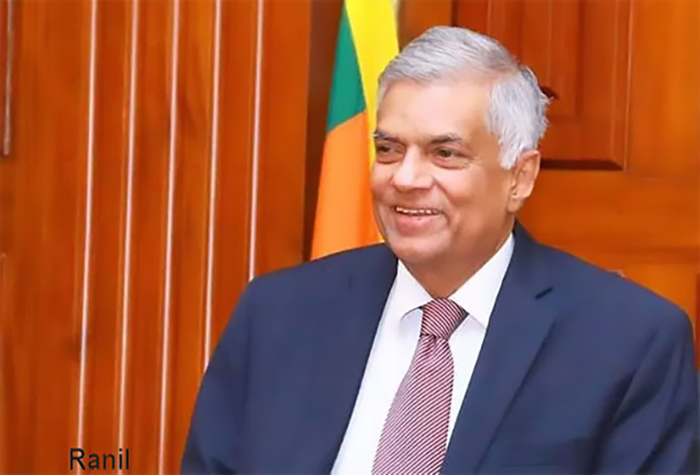
In the despicable absence of an urgent practical response on the part of the JVP-Anura Kumara Dissanayake-led NPP government to the devastating 28th March earthquake in Myanmar, ex-president Ranil Wickremesinghe has made a very timely and sensible proposal regarding how to assist our disaster stricken fellow humans in that country. ex-president Wickremesinghe! Thank you very much for saving, at least to some extent, Sri Lanka’s still unsullied reputation as a sovereign state populated by a most humane and hospitable people. You have again demonstrated your remarkable ability to emerge as an able state level troubleshooter at critical moments, this time though, just by being a mentor. It is a pity that you don’t think of adopting a more universally acceptable, less anglophile version of principled politics that will endear you to the general electorate and induce the true patriots of the country to elect you to the hot seat, where you will have the chance to show your true colours!
The ordinary people of Myanmar (formerly called Burma) are remarkably humble, polite and kind-hearted just like our fellow ordinary Sri Lankans. There’s a natural cultural affinity between us two peoples because we have been sharing the same Theravada Buddhist religious culture for many centuries, especially from the 4th century CE, when Buddhism started making gradual inroads into the Irrawaddy Valley through trade with India. Whereas Buddhism almost completely disappeared from India, it flourished in Sri Lanka and Burma. Nearly 88% of the 55 million present Myanmar population profess Buddhism, which compares to 72% of the 22 million population in Sri Lanka. Wickremesinghe has been mindful enough to take a glance at the historicity of close Myanmar-Sri Lanka relations. And he didn’t mince his words while giving some details.
At the beginning of his statement in this connection (which I listened to in a video today, April 1, 2025), Ranil Wickremesinghe said that our government has expressed its sorrow (but little else, as could be understood in the context). Countries near and far from Myanmar including even partly affected Thailand, and India, China, and distant Australia have already provided emergency assistance. Referring to the special connection we have with Myanmar as a fellow Theravada Buddhist country, he said that both the Amarapura and Ramanna nikayas brought the vital higher ordination ritual from there. We must help Myanmar especially because of this historic relationship.
When an earthquake struck Nepal, the birthplace of the Buddha, in 2015, we sent an army team to assist. On that occasion, Sri Lanka was the second country to provide relief, India being the first, with China becoming the third country to come to Nepal’s help. Today, India, Thailand, Malaysia, China and Australia have dispatched aid by now. Last year Sri Lanka gave 1 million US Dollars for Gazan refugees. We need to take a (meaningful) step now.
Wickremesinghe proposed that the army medical corps be sent to Myanmar immediately to set up a temporary hospital there. The necessary drugs and other materials may be collected from Buddhist and non-Buddhist donors in Colombo and other areas.
Emphasising the ancient friendly relationship between Sri Lanka and Myanmar, Wickremesinghe mentioned that King Alaung Sithu I (of the Pagan Dynasty, 1090-1167 CE) sent help to (Prince Keerthi who later became) King Vijayabahu the Great (1055-1110 CE) to defeat and drive away from the island the occupying Cholas after a 17 year long military campaign. The grateful Lankan monarch Vijayabahu, during his reign, offered the Thihoshin Pagoda (name meaning ‘Lord of Lanka’ pagoda, according to Wikipedia) and a golden Buddha image to the Myanmar king. (This pagoda is situated in Pakokku in the Magway region, which is one of the six regions affected by the recent earthquake. I am unable to say whether it remains undamaged. Though the monument was initiated during Vijayabahu’s lifetime, the construction was completed during the reign of King Alaung Sithu I {Wikipedia}).
Wickremesinghe, in his statement, added that it was after this that a strong connection between Sri Lanka and Myanmar started. In some Buddhist temples in Myanmar there are paintings by ancient Lankan painters, illustrating Jataka stories (Stories relating to different births of Buddha). Among these, Wickremesinghe mentioned, there is a painting depicting the duel between (the occupying Chola king of Anuradhapura) Elara and (his young native challenger from Ruhuna prince) Dutugemunu. (Although Wickremesinghe did not talk about it, a fact well known is that there is a copy of our Mahavamsa in Myanmar. In reporting the ex-president’s speech, I have added my own information and information from other sources. I have put this within parentheses)
Let’s hope President Anura Kumara Dissanayake is wise enough to derive some benefit from his predecessor’s mentoring in the name of our beloved Motherland.
Rohana R. Wasala
Opinion
Assisting solar power debate in Cabinet

Authors: Directors of Solar Village SDG CIC
www.solarvilllagesdg.org
I.M. Dharmadasa (Emeritus Professor), Nilmini Roelens (Solicitor) and Saroj Pathirana (Journalist)
The purpose of this article is to inform the Cabinet discussion on Solar Power proposed by the Ceylon Electricity Board (CEB)
Net metering and the Prosumer
The CEB has put forward a motion to the Sri Lankan Cabinet which proposes to reduce the unit price payable under the various net metering schemes to the “prosumer” (the owner of a solar panel system).
A prosumer is a blend of producer and consumer, referring to individuals who both create and consume. This is based on the notion that most producers of electricity through self-owned solar panels generate more than double their own needs as consumers. It thus enables the prosumer to connect to the national grid and receive money on a pay back scheme from the CEB for the excess electricity they produce.
What is this debate about?
Currently there are four schemes.
The Public Utilities Commission of Sri Lanka explains the various schemes involving roof -top solar solutions thus under a heading published in October 2023 – Rooftop Solar PV Connection Schemes. The two most noteworthy schemes are the Net plus and the Net plus plus schemes.
https://www.pucsl.gov.lk/rooftop-solar-pv-connection-schemes/
Through the NET Plus Plus Scheme CEB regards the prosumer as a mini power plant holder which maximises roof top generation well beyond the prosumer’s own needs making maximum use of extra roof space. This would work well for schools and companies with large buildings. CEB used to pay Rs. 37 per unit to the prosumer for up to 500kW. This unit price was available between 26 October 2022 to 1 July 2024. However, as of 1 July 2024 the unit price was reduced to Rs. 27.
We understand the new CEB proposal to the cabinet is to scrap this scheme altogether.
In relation to the Net Plus scheme which is the more accessible and popular scheme for ordinary householders the current CEB proposal is to reduce the unit price even further to Rs. 19 for solar power systems generating less than 20 kW, whilst for those generating between 20 – 100 kW the unit pay back will be Rs.17 and those generating between 100 – 500 kW will receive Rs.15 per unit.
The installation costs of a 5-kW solar panel is now around Rs 1.0 million. The cost of solar panels has in fact come down over the years and the units are recyclable. The lifespan of a solar unit is expected to be in the region of 22 to 25 years. There are now over 300 active solar companies in Sri Lanka. This is a rapidly growing sector with the prospect of generating employment for tens of thousands of young Sri Lankans for many years to come as technicians, administrators and entrepreneurs. The potential advantages for the economy are extensive Sri Lanka’s growth of the renewable energy sector using freely available sunshine available virtually all year-round given the geographical proximity to the equator
It is not just about reducing the electricity bills of the prosumer. This green energy solution would also mean we avoid the heavy annual cost of the import of fossil fuels into Sri Lanka which very seriously affects its balance of payments each year. The unwarranted need for environmentally damaging energy sources like coal, diesel and nuclear (with its inherent dangers and enormous costs), etc., will lead to a meaningless downward spiral of more debt, enhanced climate risk and pollution.
The intermittency argument
The argument of intermittency of renewables is a misguided premise. Some may argue that seasonal variations of renewables such as solar or hydro power may make them unreliable. This can very easily be remedied by investment in a smart grid. This can be done by upgrading the existing transformers and grid lines. A policy decision would be required at cabinet level to advise the CEB to reinvest any profits for this purpose.
Green Hydrogen is the future
Solar generated power can be harnessed to invest in Green Hydrogen solutions which could mean that rather being an importer of fossil fuels, that the rest of the world is turning away from, Sri Lanka becomes an exporter of green hydrogen to countries in the northern hemisphere where sunshine is scarcer.
Picture what it could do to the Sri Lankan economy if, rather than being dependent on imports of polluting and expensive fuel which can exacerbate the climate crisis, we transform our island into an eco-tourist paradise and become an exporter of clean green hydrogen.
Green hydrogen is created by splitting water molecules into its components of Hydrogen and Oxygen. The hydrogen gas can be compressed and stored for export. The minimum voltage required for splitting the water molecule is about 1.50 Volts DC and scaling up and commercialisation is happening throughout the world currently.
Rebranding Sri Lanka as a renewable energy island
To limit imports of fossil fuels for automobiles, a policy decision at governmental level could provide concessions for electric cars for solar roof owners and encourage the use of solar powered charging stations. The annual cost of imports of petrol and diesel would reduce overtime as Sri Lanka encourages clean and green electric cars.
Whilst the rest of the world is turning to renewable energy with alacrity, Sri Lanka ought not turn to fossil fuel imports in breach of its commitments to the international community.
In 2015 Sri Lanka signed up to the United Nations 2030 Agenda. Ahead of the Paris Summit Sri Lanka set out its climate action plan which the UN Framework Convention on Climate Change (UNFCCC) stated “Countries have agreed that there will be no back-tracking in these national climate plans, meaning that the level of ambition to reduce emissions will increase over time.”
(https://unfccc.int/news/sri-lanka-submits-its-climate-action-plan-ahead-of-2015-paris-agreement)
Sri Lanka has a real opportunity to rebrand itself as a renewable energy island. This means moving towards the commitments made at UNFCC – COP25, Sri Lanka Country Statement in Madrid in December 2019:
“Sri Lanka recognises the importance of the role of COP and highlights the need to take effective and definitive steps for finalising the follow up actions of the Paris Agreement.
The rise of the global mean temperature and the resulting changes have created adverse impacts on key sectors of Sri Lanka, such as agriculture, forestry, biodiversity, marine and fisheries, tourism and energy (hydro power) sectors, leading to disastrous effects on its people, ecosystems and economy. According to official statistics from 2008 to 2018, droughts, floods and landslides have affected over 15 million people, and losses and damages resulting from these calamities have been borne by Sri Lanka’s national budget… Sri Lanka is committed to inclusive and participatory climate actions to ensure that affirmative actions are taken to address the vulnerabilities of climate change.“https://unfccc.int/sites/default/files/resource/SRILANKA_cop25cmp15cma2_HLS_EN.pdf
Why is reduction of the unit price a very regressive, harmful measure?
The reduction will discourage the use of clean renewable energy in favour of higher imports and a move towards dangerous and expensive sources of energy.
The consequences of a reduction of unit price will thus be far reaching beyond the loss to the prosumer.
Lithium battery storage options mean that even when the sun stops shining at night or in the wet season the solar panel produced energy can continue to be used. It is very likely that current solar companies will need to diversify to survive and move towards lithium battery storage solutions and inverters so that year long, 24-hour access to energy is available without recourse to the national grid for their customers. As individuals and institutions go off grid CEB’s income will dwindle in the long run as the private sector takes over.
Recommendations to the cabinet
We make the following recommendations to the Government of Sri Lanka:
(i) At present we have a fragile grid, and the CEB should strenuously endeavour to minimise energy leakages and improve the grid by replacing weak transformers and grid lines. Such continuous improvements will enable us to move towards a “Smart Grid” enabling absorption of large amounts of intermittent renewable energies like wind and solar.
(ii) At present we have ~1500 MW of renewables installed, comparable to hydroelectricity. When solar power is plentiful during the daytime, hydro power can be reduced simply by controlling the water flow without any technical difficulties. This is one way of assuring energy storage while balancing the grid energy.
(iii) Another solution for this is pumped-water storage plants. It is important to follow through with such measures which have now been under discussion for some time.
(iv) The future energy carrier is green hydrogen (GH) produced by electrolysing water using both wind and solar. A global Green Hydrogen revolution is taking place, and GH can be used to run vehicles using fuel cell technology. Trains and buses are being run with GH technology in Europe. GH can also be converted into ammonia and methanol to produce fertilizer and be applied for other industrial uses. Sri Lanka must not be left behind.
(v) GH can be stored and burned whenever energy is needed, especially during nighttime. Only water vapour is produced during the burning of hydrogen without any air pollution. Sri Lanka already has the Sobhadanavi LNG plant which is almost ready to use. Since we must import LNG to run this power plant, we should be able to reduce the LNG import bill by half by mixing the natural gas (methane) with the locally produced GH. See here:
(vi) Local solar energy companies should install high quality solar energy systems and provide “after sale services” in accordance with their guarantees.
(vii) PV companies should also be encouraged to collaborate with local electronics departments to manufacture accessories like inverters and other components needed for these systems, creating new jobs, and reducing the total cost of the systems.
(viii) In addition to grid tied solar roofs, the PV companies should also market hot water systems and water pumping systems. As a country reliant mainly on agriculture, solar water pumping and drip irrigation systems, especially in the dry zone, provide a huge potential for increasing food production.
(ix) Battery capacities are improving, and costs are coming down. This can be encouraged pending replacing grid infrastructure.
(x) It is important to increase public awareness through government funded campaigns. The public should recognise the dangers of using imported and expensive fossil fuel and the importance of using renewables.
(xi) The public should also recognise the advantages of having a clean environment, health benefits and enhanced living conditions.
(xii) A community development project called “Solar Village” to empower needy communities, accelerate their sustainable development, reduce poverty and take climate action has been developed over the past two decades. Seven solar villages have been established and funding for three more solar villages have been obtained.
Solar Village SDG, a UK based community interest company has been established to encourage the use of renewables and to pilot programmes which will support sustainable development goals. This includes providing access to a quality education for all via smart rooms which will be set up alongside solar villages in rural schools. Such initiatives could be encouraged and supported.
Opinion
How monks practice Buddhism in Sri Lanka
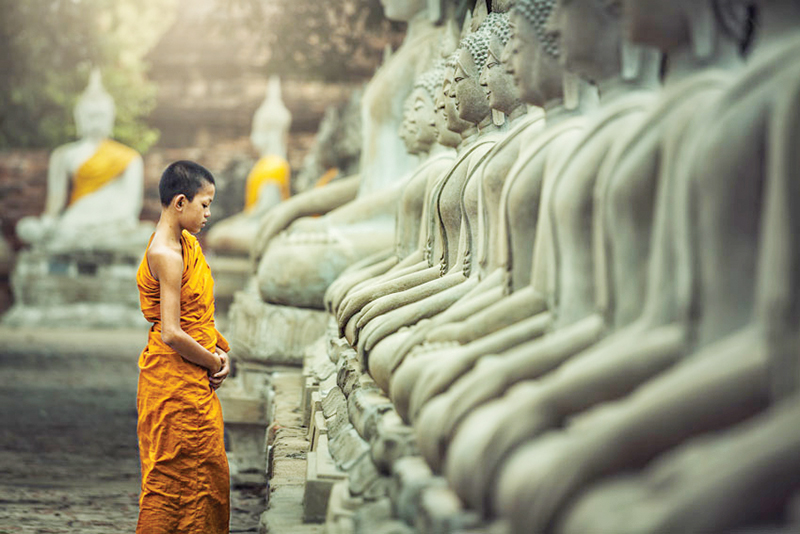
Time was when we had to observe the five precepts chanting in front of the omnipresent Buddha statue in every Buddhist household, and pay homage to parents straight afterwards. Attend mandatory Sunday schools, trek about 6 miles (return) to Moratu Vidyalaya’s main hall together as a family on Fridays to listen to a sermon by erudite visiting monks from the Vajiraramaya and elsewhere.
Having been settled in the UK for half a century, I can only go by what I read and hear from Sri Lankan friends and families. All those practices seem to have changed for the worse, sadly! Living in luxury, temples are run on business models nowadays! Monks ask what they wish to eat at alms-givings, including pork, etc., tell how much it costs the laypeople to invite them, etc! Unbelievable to say the least! I dare say it seems to start from the top of the hierarchy – the Kandy Temples, where the prelates live and are patronised by all politicians from Presidents, Prime Ministers and others! Some monks engaging in politics is not uncommon! For example, a recent statement made by Ven. Dodampahala Rahula Thera during a religious ceremony held to bless former President Ranil Wickremesinghe on his birthday has sparked widespread discussion on social media.
Speaking at the event, Ven. Rahula Thera had claimed that he had advised then-President Wickremesinghe not to import fuel ahead of the 2024 Presidential Election. However, the Thera has since clarified that the remark was made in error due to the pressure of the moment. Pertinent question is why did he choose such intervention?
All these are in such sharp contrast to Buddhist monks in the Western world and South East Asia where they shun luxury to lead a truly monastic lifestyle in order to practise what they preach.
Respected and loved in his own country as a man of great wisdom, Ajahn Cha was also instrumental in establishing Theravada Buddhism in the West. Beginning in 1979 with the founding of Cittaviveka commonly known as Chithurst Buddhist Monastery) in the United Kingdom, the Forest Tradition of Ajahn Chah has spread throughout Europe, the United States and the British Commonwealth. The dhamma talks of Ajahn Chah have been recorded, transcribed and translated into several languages.
More than one million people, including the Thai Royal Family attended Ajahn Chah’s funeral in January 1993 held a year after his death due to the “hundreds of thousands of people expected to attend”. He left behind a legacy of dhamma talks, students, and monasteries. The little I know of Buddhism teaches me to practice His Noble Teachings. It follows therefore the importance of listening to practising Buddhist monks who actually command respect, not by their titles! They don’t mean anything to me. Not familiar with various Nikayas, I think Buddhist monks should have both their shoulders properly covered in the interests of propriety! Though not a vegetarian, I believe in Ahimsa as even little spiders feel pain. Though my wife is scared of them, I tell her they are scared of her, more to the point! So, I catch the innocent crawly creatures by hand to throw them out of harm’s way! We have stopped the practice of throwing inevitable food waste into Council provided bins, instead collect them on a regular basis to feed wildlife we have in abundance around rural Wales we live in. They are all gone the following day including old marrow bones after our two little dogs finish with them! It gives us great pleasure! In the end, it all boils down to respecting Mother Nature! It’s Mother’s Day today to remember Mother Nature and how proud I am of my surname!
Sunil Dharmabandhu
Wales, UK
-

 News5 days ago
News5 days agoBid to include genocide allegation against Sri Lanka in Canada’s school curriculum thwarted
-

 Sports6 days ago
Sports6 days agoSri Lanka’s eternal search for the elusive all-rounder
-

 News7 days ago
News7 days agoGnanasara Thera urged to reveal masterminds behind Easter Sunday terror attacks
-

 Sports2 days ago
Sports2 days agoTo play or not to play is Richmond’s decision
-

 News6 days ago
News6 days agoComBank crowned Global Finance Best SME Bank in Sri Lanka for 3rd successive year
-

 Features6 days ago
Features6 days agoSanctions by The Unpunished
-

 Features6 days ago
Features6 days agoMore parliamentary giants I was privileged to know
-

 Latest News4 days ago
Latest News4 days agoIPL 2025: Rookies Ashwani and Rickelton lead Mumbai Indians to first win


